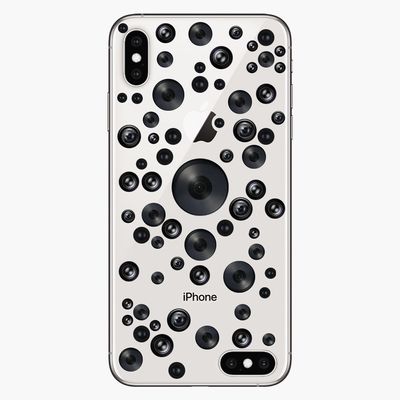
The mid-aughts were an exciting period in which razor companies, which had long stuck to just one or two blades in their cartridge razors, raced to see just how many blades they could cram into a cartridge — a sea change memorialized forever in the classic 2004 Onion headline (ostensibly quoting Gillette’s then-CEO James M. Kilts), “Fuck Everything, We’re Doing Five Blades.” (Gillette went on to actually do five blades just a year later with its Fusion series in 2005, and in 2018 you can now buy a razor with seven blades to handle all that alpha-male stubble.)
The same thing is now happening with rear cameras on smartphones. If you thought just two rear cameras on your smartphone were enough to take great photos, you’re a sucker: You really need three. Or maybe even four! Or hell, maybe six?
Huawei’s Mate 20 Pro and P20 Pro both sport three rear cameras, as does the LG V40. Samsung put four cameras on its Galaxy A9 last year, and there were rumors that the company might debut a version of its upcoming Galaxy S10 with six rear cameras. Now, according to The Wall Street Journal, Apple’s new top-end iPhone will also sport three rear cameras this fall.
So what does having a multitude of camera lenses do for you, the phone consumer screaming endlessly into the night for as many rear cameras as possible? It’s not quite the marketing gimmick you may suspect.
Smartphone cameras have always battled with the fact that the camera body in a smartphone must be tiny. The two-lens setup mainstreamed by the iPhone 7 Plus in 2016 allowed for smartphones to simulate the depth-of-field or “bokeh” effect you see in high-end DSLR photography by using the slight offset of the two lenses to create a 3-D rendering of the space photographed, then using software rendering to keep certain parts of the shot in focus (usually someone’s face) and blur other parts. Depending on the phone, that second lens could also be a telephoto lens, meaning that for the first time smartphone cameras could have an optical zoom, making for much crisper shots of far-away objects, while other phone makers made one lens a monochrome and the other full-color, with the monochrome lens meant to produce a much crisper image than was previously possible.
Adding in more lenses simply allows for more options. Samsung’s mid-tier A9, for instance, sports a primary 24-megapixel camera for taking standard shots, an ultra-wide, 120-degree lens for capturing more panoramic views, a telephoto lens with 2x optical zoom, and a fourth lens dedicated purely to creating depth-of-field shots. LG’s V40 gives you a main lens, a telephoto lens, and a wide-angle lens, allowing for a much broader range of options for potential photos than most other cameras on the the market. Huawei’s flagship P20 Pro (which is currently hard though not impossible to come by in the United States due to strained relations between Huawei and the U.S. government) sports a ridiculous 40-megapixel main color lens, a 20-megapixel monochrome lens, and an 8-megapixel telephoto lens that helps you zoom in close.
The downside to extra lenses, and the knock against both Huawei’s P20 Pro and the LG V40, is those extra lenses don’t always mean you take a better photograph by default. Both require a bit extra work on your part to get the best shot possible, fiddling with settings depending on lighting and what type of shot you’re aiming for. And most smartphone photographers still prefer something that allows for quick point-and-shoot photography, not point-and-fiddle-with-options photography.
But Samsung, which will debut its Galaxy S10 in February, has a good track record of creating camera software that take great photos by default, while still allowing more finicky photographers to jump deep into settings if they wish to. And while Apple’s camera app may not give as much control to the user as someone who’s used to using a DSLR would like, it still does a superb job of taking really nice shots on a consistent basis.
In a market in which smartphone sales are either flat or declining and it’s becoming ever more difficult to convince users to upgrade to a new smartphone if their current one is working fine, adding in more lenses is one way to get a few more people into stores. But in the end, the best phone camera isn’t the one with the most lenses; it’s the one that consistently takes the best photos.





























